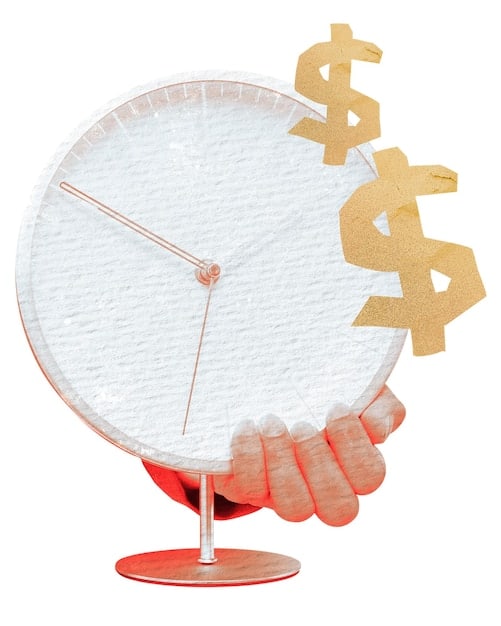Flash Sales: The Truth About Saving Money or a Scam?

Flash sales promise deep discounts, but understanding their tactics and potential drawbacks is crucial to ensure you’re truly saving money and not falling for marketing hype.
Do The Truth About Flash Sales: Are They Really the Best Way to Save Money? When the clock starts ticking, and the discounts seem too good to pass up, are you genuinely getting a bargain, or is the pressure getting to you?
Understanding Flash Sales
Flash sales are time-limited promotional events where retailers offer significant discounts on a limited selection of products. They’re designed to create a sense of urgency and scarcity, encouraging consumers to make quick purchasing decisions.
These sales often run for a very short period, sometimes just a few hours, and feature a limited quantity of items. This combination drives up demand and can lead to impulse buying.
Key Characteristics of Flash Sales
Let’s break down the defining features that set flash sales apart from regular sales events:
- Limited Time: The discounts are only available for a short window, creating a sense of urgency.
- Significant Discounts: Flash sales offer substantial price reductions compared to regular retail prices.
- Limited Quantity: The number of items available at the discounted price is restricted.
- High Pressure: The combination of limited time and quantity encourages quick purchasing decisions.
Retailers use these tactics to clear out inventory quickly, boost sales, and attract new customers.

The Psychology Behind Flash Sales
Flash sales are not just about offering discounts; they’re about tapping into the consumer psyche. Understanding the psychological triggers they employ can help you make more informed decisions.
Several psychological principles come into play, influencing how people react to these sales events.
Scarcity Principle
This principle highlights how people place a higher value on items that are perceived as rare or limited. Flash sales leverage this by limiting both the time and quantity of discounted products.
Loss Aversion
People are generally more motivated to avoid a loss than to acquire an equivalent gain. Flash sales create a fear of missing out (FOMO), making consumers feel they might lose a great deal if they don’t act quickly.
Sense of Urgency
The countdown timer and limited availability create a sense of urgency, prompting consumers to make quick decisions without fully considering their needs or budget. This can lead to impulse purchases that they later regret.
By understanding these psychological factors, you can become more aware of how flash sales influence your decisions and resist the urge to buy impulsively.
The Potential Benefits of Flash Sales
Despite the potential pitfalls, flash sales can offer genuine opportunities to save money. When approached strategically, they can be a valuable tool for budget-conscious shoppers.
Here are some potential benefits to consider:
- Significant Savings: You can sometimes find products at deeply discounted prices, allowing you to save a substantial amount of money.
- Discover New Products: Flash sales can introduce you to brands and products you might not have considered otherwise.
- Opportunity to Buy Desired Items: If you have been eyeing a particular item, a flash sale might offer the perfect opportunity to purchase it at a lower price.
However, it’s essential to approach flash sales with a clear strategy and awareness of their potential drawbacks to maximize the benefits.
The Downsides of Flash Sales
While flash sales can be tempting, they also come with several potential downsides. Awareness of these drawbacks is crucial to avoid overspending or purchasing items you don’t need.
Let’s delve into the common pitfalls associated with such sales:
Impulse Buying
The pressure of time and limited availability can lead to impulsive purchases, causing you to buy items you don’t really need or want.
Overspending
Because you are focused on the discounts, you might end up spending more money than you originally intended. This can derail your budget and lead to financial stress.
Questionable Quality
Sometimes, retailers use flash sales to offload low-quality or outdated inventory. You might end up purchasing items that are not worth the discounted price.

How to Navigate Flash Sales Wisely
To make the most of flash sales without falling into their traps, it’s essential to adopt a strategic approach. Careful planning and mindful shopping can help you secure genuine savings.
Here are some tips for navigating flash sales wisely:
Set a Budget
Determine how much you can afford to spend before browsing the sales. This will help you avoid overspending and stay within your financial limits.
Do Your Research
Before making a purchase, compare prices with other retailers to ensure you are getting a real discount. Check product reviews to assess the quality and reliability of the item.
Prioritize Needs over Wants
Focus on purchasing items that you genuinely need rather than getting caught up in the excitement of the sale. This will help you avoid impulse buying and unnecessary expenses.
By following these guidelines, you can approach flash sales with confidence and make informed purchasing decisions.
Real-Life Examples and Case Studies
Several real-life examples and case studies illustrate the impact of flash sales on consumer behavior. These examples showcase both successful savings and regrettable impulse purchases.
Analyzing these examples provides valuable insights into how flash sales play out in practice.
Case Study 1: The Electronics Enthusiast
An electronics enthusiast meticulously researched a high-end gadget and waited for a flash sale. When the opportunity arose, they secured the product at a fraction of its original price. This demonstrates the value of preparation and patience.
Case Study 2: The Fashionista’s Regret
A fashion-conscious consumer got caught up in the urgency of a flash sale and purchased several clothing items without considering their wardrobe or budget. The result was a closet full of unwanted clothes and a dent in their savings. This highlights the dangers of impulse buying.
Case Study 3: The Home Improvement Hunter
A homeowner strategically used flash sales on home improvement items to renovate their property at a reduced cost. By targeting specific needs and comparing prices, they achieved significant savings. This emphasizes the importance of targeted spending.
These cases illustrate the diverse outcomes of engaging with flash sales. The key is to learn from both successes and failures to make informed decisions.
| Key Aspect | Brief Description |
|---|---|
| ⏰ Limited Time | Sales run for a short period, creating urgency. |
| 💸 Deep Discounts | Offers significant price reductions. |
| 🛍️ Impulse Buys | Risk of buying items you don’t need. |
| 🔎 Research First | Compare prices to ensure real savings. |
Frequently Asked Questions
A flash sale is a short-term promotional event that offers significant discounts on a limited selection of products. The goal is to create urgency and encourage quick purchases.
While some deals are legitimate, it is important to compare prices with other retailers to ensure that the discount is real and worthwhile.
Setting a budget, researching products beforehand, and prioritizing needs over wants can help you avoid making unnecessary purchases.
Check the retailer’s return policy. Many stores allow returns within a certain timeframe, giving you the chance to get your money back if needed.
Flash sales predominantly occur online, but some brick-and-mortar stores also host these events. Keep an eye out for announcements from your favorite retailers.
Conclusion
Ultimately, navigating flash sales requires a blend of awareness, strategy, and self-control. By understanding the psychological tactics at play and adhering to mindful shopping practices, you can unlock genuine savings and avoid the pitfalls of impulsive buying.





